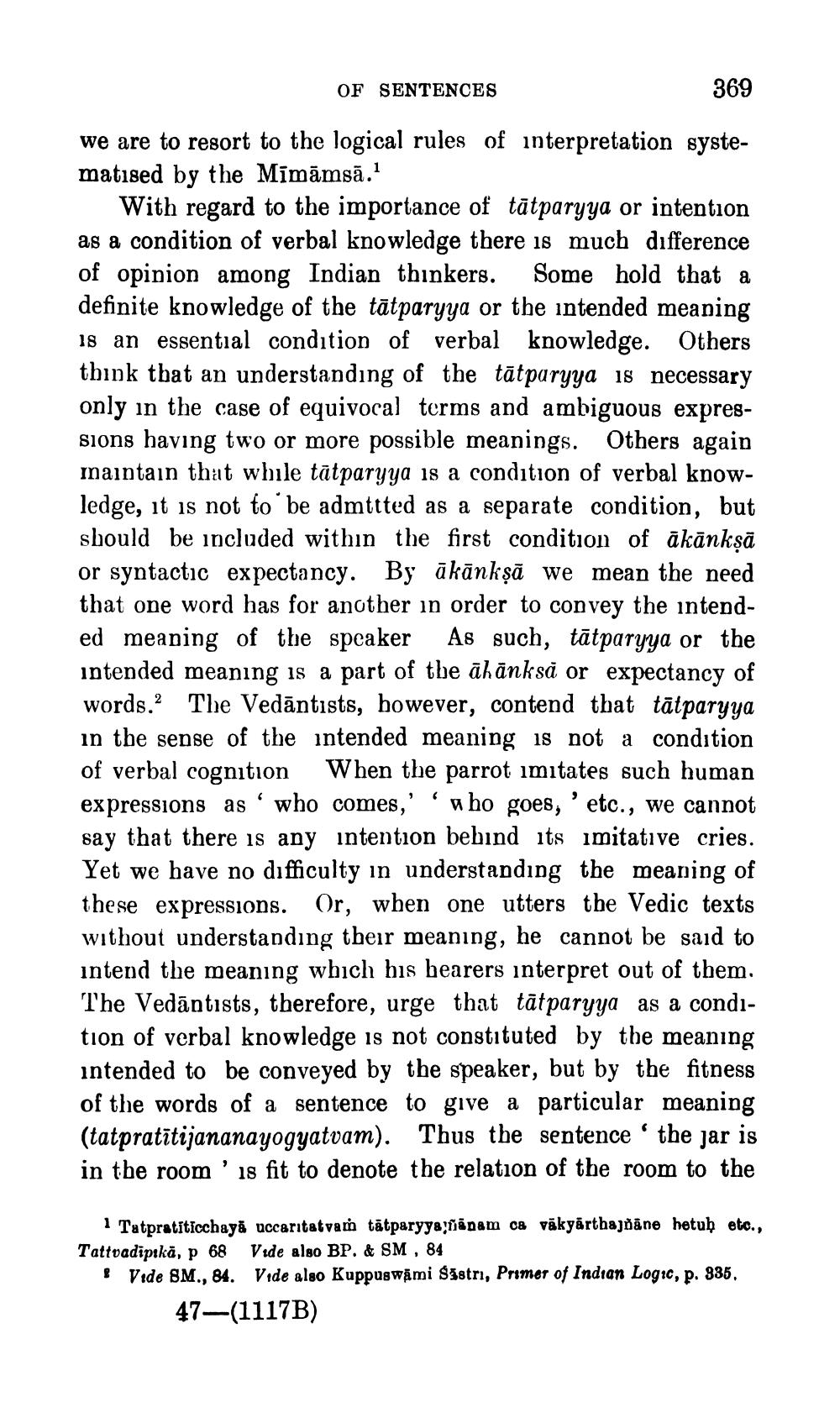________________
OF SENTENCES
369
we are to resort to the logical rules of interpretation systematised by the Mīmāmsā.'
With regard to the importance of tātparyya or intention as a condition of verbal knowledge there is much difference of opinion among Indian thinkers. Some hold that a definite knowledge of the tātparyya or the intended meaning 18 an essential condition of verbal knowledge. Others think that an understanding of the tātpuryya is necessary only in the case of equivocal terms and ambiguous expressions having two or more possible meanings. Others again maintain that while tātparyya is a condition of verbal knowledge, it is not to be admttted as a separate condition, but should be included within the first condition of ākānkşā or syntactic expectancy. By ākānkṣā we mean the need that one word has for another in order to convey the intended meaning of the speaker As such, tātparyya or the intended meaning is a part of the āhānksă or expectancy of words. The Vedāntists, however, contend that tātparyya in the sense of the intended meaning is not a condition of verbal cognition When the parrot imitates such human expressions as 'who comes,' 'n ho goes, ' etc., we cannot say that there is any intention behind its imitative cries. Yet we have no difficulty in understanding the meaning of these expressions. Or, when one utters the Vedic texts without understanding their meaning, he cannot be said to intend the meaning which bis bearers interpret out of them. The Vedāntists, therefore, urge that tātparyya as a condition of verbal knowledge is not constituted by the meaning intended to be conveyed by the speaker, but by the fitness of the words of a sentence to give a particular meaning (tatpratītijananayogyatvam). Thus the sentence' the jar is in the room is fit to denote the relation of the room to the
Tatpratīticchayā uccaritatvam tātparyya nanam ca väkyärthajoane hetub etc., Tattvadipikā, p 68 Vide also BP. & SM , 84 & Vide 8M., 84. Vide also Kuppuswami Sistrı, Primor of Indian Logic, p. 385.
47—(1117B)




